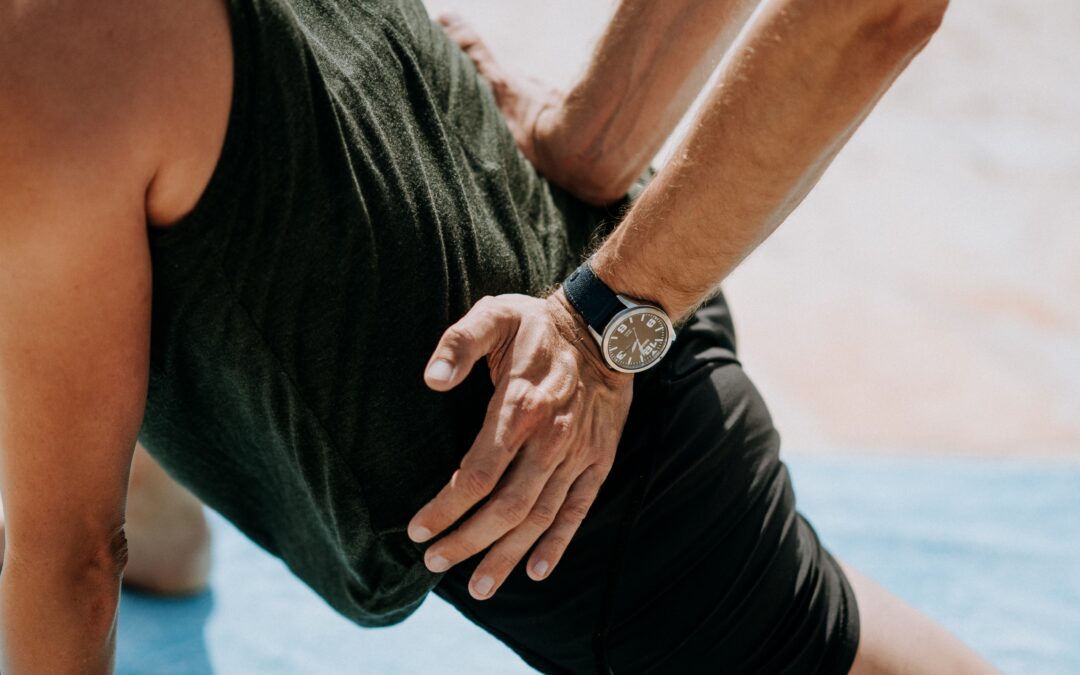What is functional training and why is it so important to incorporate these movements into your daily life?
A dictionary definition of function training means something that is ‘designed to be practical and useful rather than attractive’
A definition often used in relation to training is ‘fit for purpose’.
So one of the most critical aspects of functional training is that it focuses on the specific needs of the individual and the activities they wish to achieve. Over time our bodies have evolved to adopt 7 basic functional movement patterns so there’s absolutely no need for an exercise programme to be complicated!
The term ‘functional training” can commonly be applied when describing exercises that have several of the following properties
- Movement in several different planes
- Working large muscle groups
- Whole body integration – working upper and lower body together, encouraging core engagement
- Demand balance and stability
- Movement patterns that reflect your activities of daily living such as squatting, pushing and pulling, twisting and stabilising.
So…. If an individual has a goal of maximising performance in a given task whether its competing at an elite level or making activities of daily living easier. Focus would then typically be on improving movement quality and efficiency depending on the specific task.
Examples could include;
- A rugby player wanting to pass the ball more quicky and for it to go further
- A deconditioned grandparent who has lost fitness or muscle tone through lack of exercise, wanting to be able to play with grandchildren
- A new mother wanting to lift and carry her baby safely
- A farmer wanting to lift and carry heavy loads throughout the day.
When considering these examples it’s clear that muscles will not be working in isolation and basing an exercise programme around relevant movement patterns will enable more benefit to the goals of the client rather than a straightforward strength or cardio programme.
Every movement we perform is an activity of daily living, from lifting a bag of shopping to sweeping the floor or driving the car will fall into at least one of a number of key movement patterns. These movement patterns offer us a way to interact with our environment to express force and to move ourselves our objects around. Let’s look at these movements…
1.GAIT/LOCOMOTIAN
Moving your body from A to B. Normally in bipedal motion (two limbs) but can be in quadrupedal movement.
Exercises include running, climbing and crawling.
Because each side of the brain controls opposite sides of the body, cross-crawling and other quadrupedal movements are excellent ways to exercise your full body and mind, improving our neurological pathways and promoting amongst other things muscle mind connection.
2. CARRY/LOAD
Moving your body from A to B with an object, stabilising through the core
Exercises include farmer’s walk, fireman’s lift, sled drag
3.PUSH
Driving the arms away from the body, hand moves away from the shoulder.
Exercises include shoulder press, press up, med ball slam, kettle bell overhead press
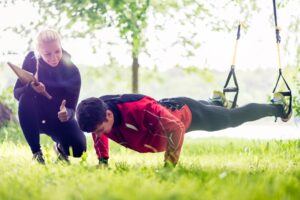
4.PULL
Drawing the arms in toward the body hands move towards the shoulder.
Exercises include lat pulldown, pull ups, row variations
Strengthens back arms and shoulders, eg. taking loads down from the loft, overhead cupboards
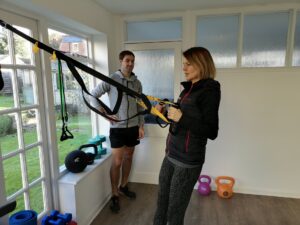
5.SQUAT
Flex at the knee and the hip whilst abducting the hip, lowering the hip down towards the ground before returning to an upright position.
Exercises include squat variations, lunges.
Motivating to be able to get on and off the loo independently into old age!
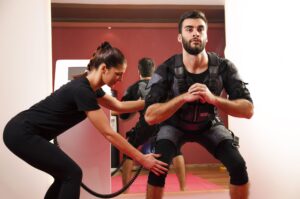
6.HINGE
Flex at the hip only, pushing the hip backwards the wall before returning to an upright position.
Exercises include deadlift, good morning, kettlebell swing.
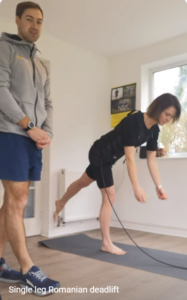
7.ROTATION/ ANTI ROTATION
Moving in the transverse plane resisting movement in the transverse plane. Can be an additional action in other movement patterns, eg. Lunge and twist, squat with rotational press
Exercises include woodchop, Russian twists.
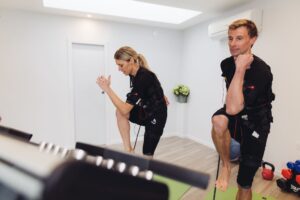
By including these essential movement patterns into your training, general exercise or daily activity you’ll be ensuring you stay as mobile, strong and flexible in the essential planes of movement that our bodies have adapted to, to carry out every day activities.
We include variations of these essential movement patterns in all our EMS and Personal Training sessions at Fast Track Fitness; if you are unsure if you are exercising efficiently do get in contact we’d love to help!

